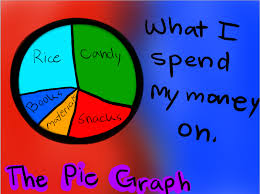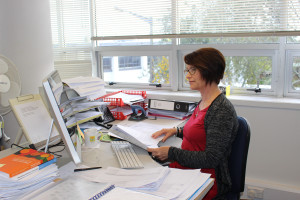Project directors: Beverley Cooper and Bronwen Cowie
Researcher team: Mira Peter, Judy Bailey, Merilyn Taylor and Philippa Hunter
Project Dates: 2014 - 2017
 This Teaching and Learning Research Initiative funded project investigated the development of the Mathematical Thinking and Reasoning Proficiency (MTRP) of student-teachers enrolled in primary initial teacher education programmes. It followed a sub-group of these student-teachers into the classroom as beginning teachers. The focus was on how student-teachers utilise and benefit from activities embedded across their courses and resources specifically designed to support their independent self-regulated learning. The project will contributed to understandings of the systems required to assist student-teachers in the development of the MTRP needed for the various aspects of their professional role: mathematics teaching, student data analysis and administration.
This Teaching and Learning Research Initiative funded project investigated the development of the Mathematical Thinking and Reasoning Proficiency (MTRP) of student-teachers enrolled in primary initial teacher education programmes. It followed a sub-group of these student-teachers into the classroom as beginning teachers. The focus was on how student-teachers utilise and benefit from activities embedded across their courses and resources specifically designed to support their independent self-regulated learning. The project will contributed to understandings of the systems required to assist student-teachers in the development of the MTRP needed for the various aspects of their professional role: mathematics teaching, student data analysis and administration.
Research questions
The research questions for the study were:
1. Which resources and practices are effective in supporting the development of student teacher mathematical
thinking within a tertiary setting?
2. How does student teacher mathematical thinking change over the course of a 1-year graduate diploma ITE
programme when student teachers are provided with embedded and self-regulated opportunities to learn?
Project highlights
- The research team and paper coordinators have had interesting and valuable conversations identifying mathematical thinking embedded in papers across the programmes.
- The map of some of the mathematical thinking that is embedded in papers provides valuable information for the mathematics mentors and students on where in programmes students may come across aspects of mathematical thinking.
- The mathematics mentors are identifying aspects of mathematical thinking for teachers' roles where support is needed and locating resources for self-regulated learning.
- There seems to be little difference in student teachers confidence and attitudes across programmes.
Implications for practice
 There is value in a focus on raising awareness.
There is value in a focus on raising awareness.
Alerting lecturers and student teachers to the possibility of mathematical and statistical thinking in their courses
can sensitise them to the range of contexts where this is relevant and informs action. Strategies for raising
awareness/embedding would seem to be worthy of further exploration when developing tertiary programmes.- The development of a curriculum map, use of a mapping template, and a curriculum map itself are useful tools
for exploring and making explicit cross programme ideas. The map and mapping template acting as boundary objects facilitated communication and cooperation across different groups and communities. This played a valuable role in expanding and clarifying what mathematical thinking is and in identifying opportunities for learning related to mathematical thinking in courses. - Giving value to regular conversation about cross programme ideas can enhance lecturer understanding
of these ideas and help develop the shared understanding and vision that is essential for substantial and
systematic change. - Conversations about mathematical thinking, whether centred on completing the template, reflecting on the
map, or more exploratory, served to stimulate thinking amongst lecturers about what mathematical thinking
there was in their courses. It also prompted them to consider how, when, and why they might highlight
for students the embedded mathematical thinking. Lecturers who participated reported they found the
conversations valuable for their own practice. - Involvement in research can stimulate and support change.
- The research interview process itself can be viewed as an intervention. In our case, the interviews served to
value and make visible mathematical thinking as an aspect of all coursework in a programme and hence as part
of all lecturers’ work in much the same way it is an influence across the breadth of teachers’ work. - The interviews served a similar function for students. Participant students enjoyed the pre and post practicum
discussions and their commentary confirmed that their example space of instances of the use of mathematical
thinking across a teacher’s role expanded over time. This indicated an increased awareness and, importantly,
the students linked this awareness to actions they might take. The notion of raising awareness as a strategy that
includes repeated focused discussion coupled with greater lecturer attention holds promise as a means for
fostering the learning of concepts that are cross-curricular. It highlights the role of using contexts that students
are familiar with or have an investment in when offering support. - Programmes need to provide multiple opportunities for learning and using ideas as well as feedback on their
use in action as part of developing student teachers’ self-critical and reflective practice. - Student teachers’ self-assessment and confidence did not correlate with their answers being correct in the pretest. This poses a challenge for mathematics educators and the ITE programme as a whole. Programmes need
to provide multiple opportunities for students to encounter, use, and evaluate their understanding of an idea
and develop a reflective/ critical/questioning stance through collaborative practice.
Project outputs & publications:
Three Papers have been accepted to NZARE conference December:
i) Scoping the meaning of critical in mathematical thinking for Initial Teacher Education
ii) Mapping mathematical thinking in Initial Teacher Education: Curriculum maps as boundary objects?
iii) Student-teacher perceptions of the role of mathematical and statistical thinking in teachers' work.
AERA 2016
A paper has been submitted for the AERA conference April 2016Student-teacher perceptions of the role of mathematical and statistical thinking in teachers' work.
